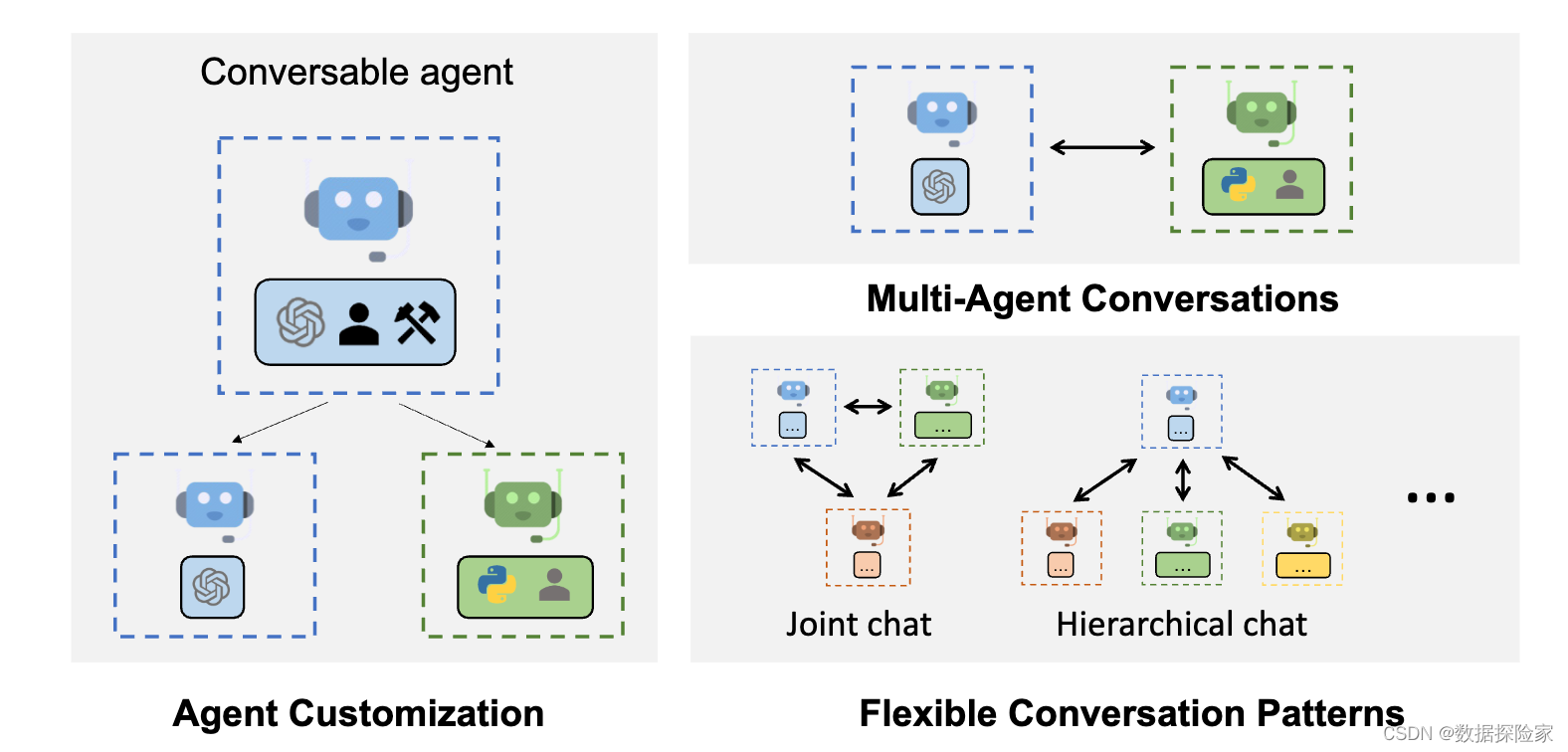Autogen4j: the Java version of Microsoft AutoGen
https://github.com/HamaWhiteGG/autogen4j
Java version of Microsoft AutoGen, Enable Next-Gen Large Language Model Applications.
1. What is AutoGen
AutoGen is a framework that enables the development of LLM applications using multiple agents that can converse with each other to solve tasks. AutoGen agents are customizable, conversable, and seamlessly allow human participation. They can operate in various modes that employ combinations of LLMs, human inputs, and tools.

The following example in the autogen4j-example.
2. Quickstart
2.1 Maven Repository
Prerequisites for building:
- Java 17 or later
- Unix-like environment (we use Linux, Mac OS X)
- Maven (we recommend version 3.8.6 and require at least 3.5.4)
<dependency>
<groupId>io.github.hamawhitegg</groupId>
<artifactId>autogen4j-core</artifactId>
<version>0.1.0</version>
</dependency>
2.2 Environment Setup
Using Autogen4j requires OpenAI’s APIs, you need to set the environment variable.
export OPENAI_API_KEY=xxx
3. Multi-Agent Conversation Framework
Autogen enables the next-gen LLM applications with a generic multi-agent conversation framework. It offers customizable and conversable agents that integrate LLMs, tools, and humans.
By automating chat among multiple capable agents, one can easily make them collectively perform tasks autonomously or with human feedback, including tasks that require using tools via code.
Features of this use case include:
- Multi-agent conversations: AutoGen agents can communicate with each other to solve tasks. This allows for more complex and sophisticated applications than would be possible with a single LLM.
- Customization: AutoGen agents can be customized to meet the specific needs of an application. This includes the ability to choose the LLMs to use, the types of human input to allow, and the tools to employ.
- Human participation: AutoGen seamlessly allows human participation. This means that humans can provide input and feedback to the agents as needed.
3.1 Auto Feedback From Code Execution Example
Auto Feedback From Code Execution Example
// create an AssistantAgent named "assistant"
var assistant = AssistantAgent.builder()
.name("assistant")
.build();
var codeExecutionConfig = CodeExecutionConfig.builder()
.workDir("data/coding")
.build();
// create a UserProxyAgent instance named "user_proxy"
var userProxy = UserProxyAgent.builder()
.name("user_proxy")
.humanInputMode(NEVER)
.maxConsecutiveAutoReply(10)
.isTerminationMsg(e -> e.getContent().strip().endsWith("TERMINATE"))
.codeExecutionConfig(codeExecutionConfig)
.build();
// the assistant receives a message from the user_proxy, which contains the task description
userProxy.initiateChat(assistant,
"What date is today? Compare the year-to-date gain for META and TESLA.");
// followup of the previous question
userProxy.send(assistant,
"Plot a chart of their stock price change YTD and save to stock_price_ytd.png.");
The figure below shows an example conversation flow with Autogen4j.

After running, you can check the file coding_output.log for the output logs.
The final output is as shown in the following picture.

3.2 Group Chat Example
var codeExecutionConfig = CodeExecutionConfig.builder()
.workDir("data/group_chat")
.lastMessagesNumber(2)
.build();
// create a UserProxyAgent instance named "user_proxy"
var userProxy = UserProxyAgent.builder()
.name("user_proxy")
.systemMessage("A human admin.")
.humanInputMode(TERMINATE)
.codeExecutionConfig(codeExecutionConfig)
.build();
// create an AssistantAgent named "coder"
var coder = AssistantAgent.builder()
.name("coder")
.build();
// create an AssistantAgent named "pm"
var pm = AssistantAgent.builder()
.name("product_manager")
.systemMessage("Creative in software product ideas.")
.build();
var groupChat = GroupChat.builder()
.agents(List.of(userProxy, coder, pm))
.maxRound(12)
.build();
// create an GroupChatManager named "manager"
var manager = GroupChatManager.builder()
.groupChat(groupChat)
.build();
userProxy.initiateChat(manager,
"Find a latest paper about gpt-4 on arxiv and find its potential applications in software.");
After running, you can check the file group_chat_output.log for the output logs.
4. Run Test Cases from Source
git clone https://github.com/HamaWhiteGG/autogen4j.git
cd autogen4j
# export JAVA_HOME=JDK17_INSTALL_HOME && mvn clean test
mvn clean test
This project uses Spotless to format the code.
If you make any modifications, please remember to format the code using the following command.
# export JAVA_HOME=JDK17_INSTALL_HOME && mvn spotless:apply
mvn spotless:apply
5. Support
Don’t hesitate to ask!
Open an issue if you find a bug or need any help.
本文来自互联网用户投稿,该文观点仅代表作者本人,不代表本站立场。本站仅提供信息存储空间服务,不拥有所有权,不承担相关法律责任。 如若内容造成侵权/违法违规/事实不符,请联系我的编程经验分享网邮箱:veading@qq.com进行投诉反馈,一经查实,立即删除!